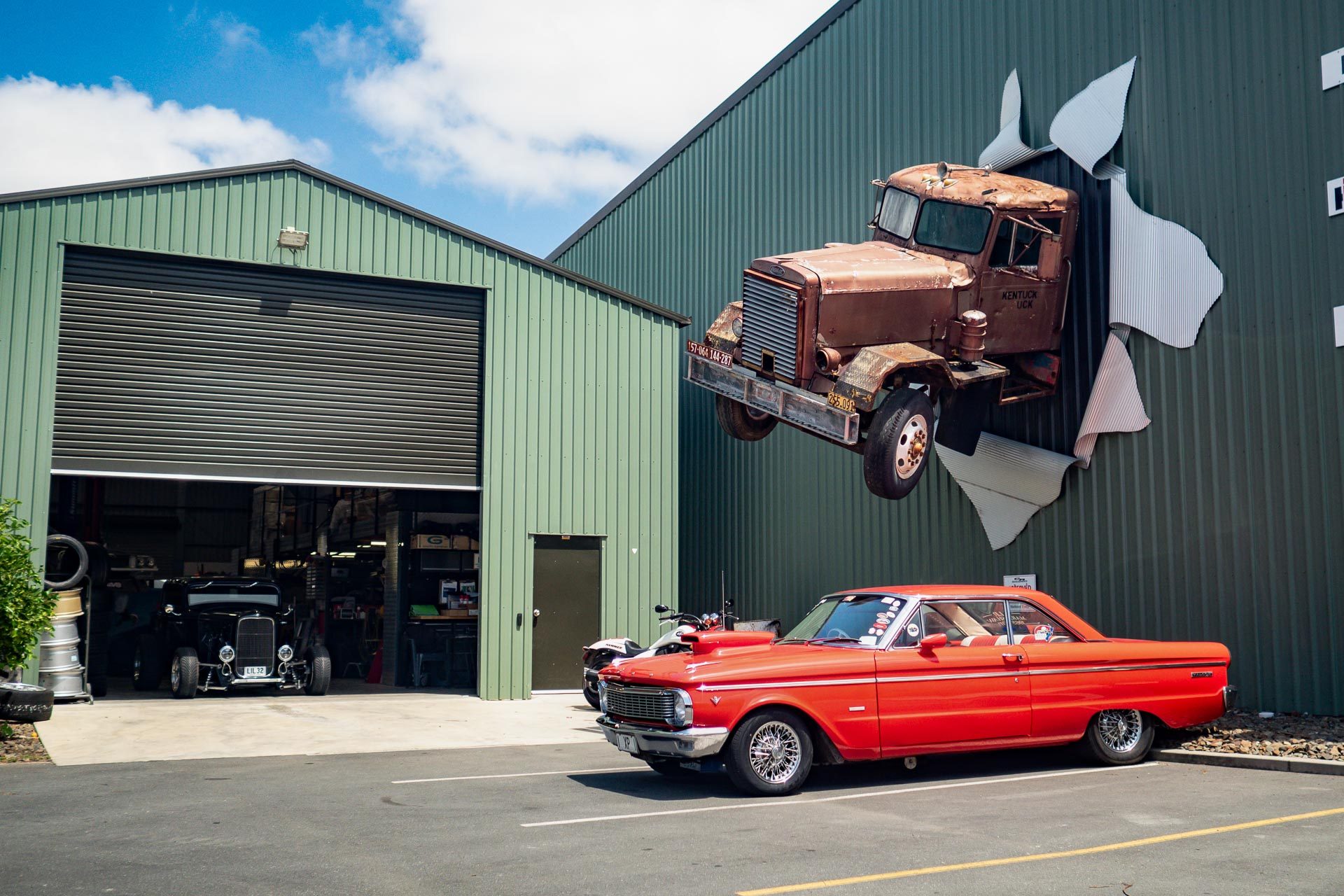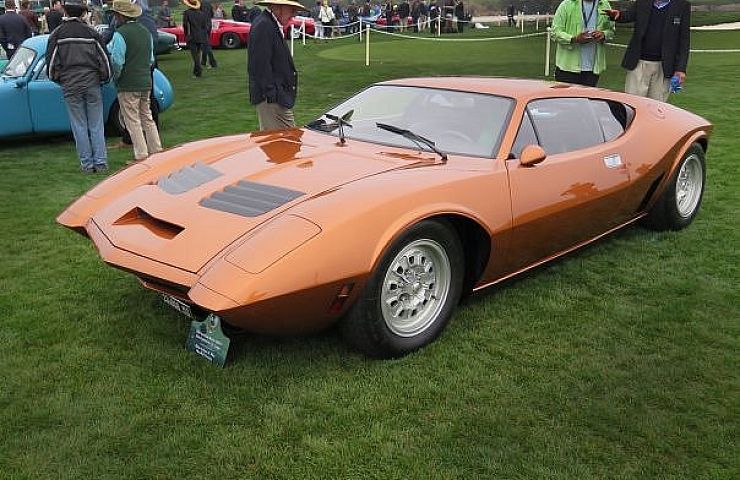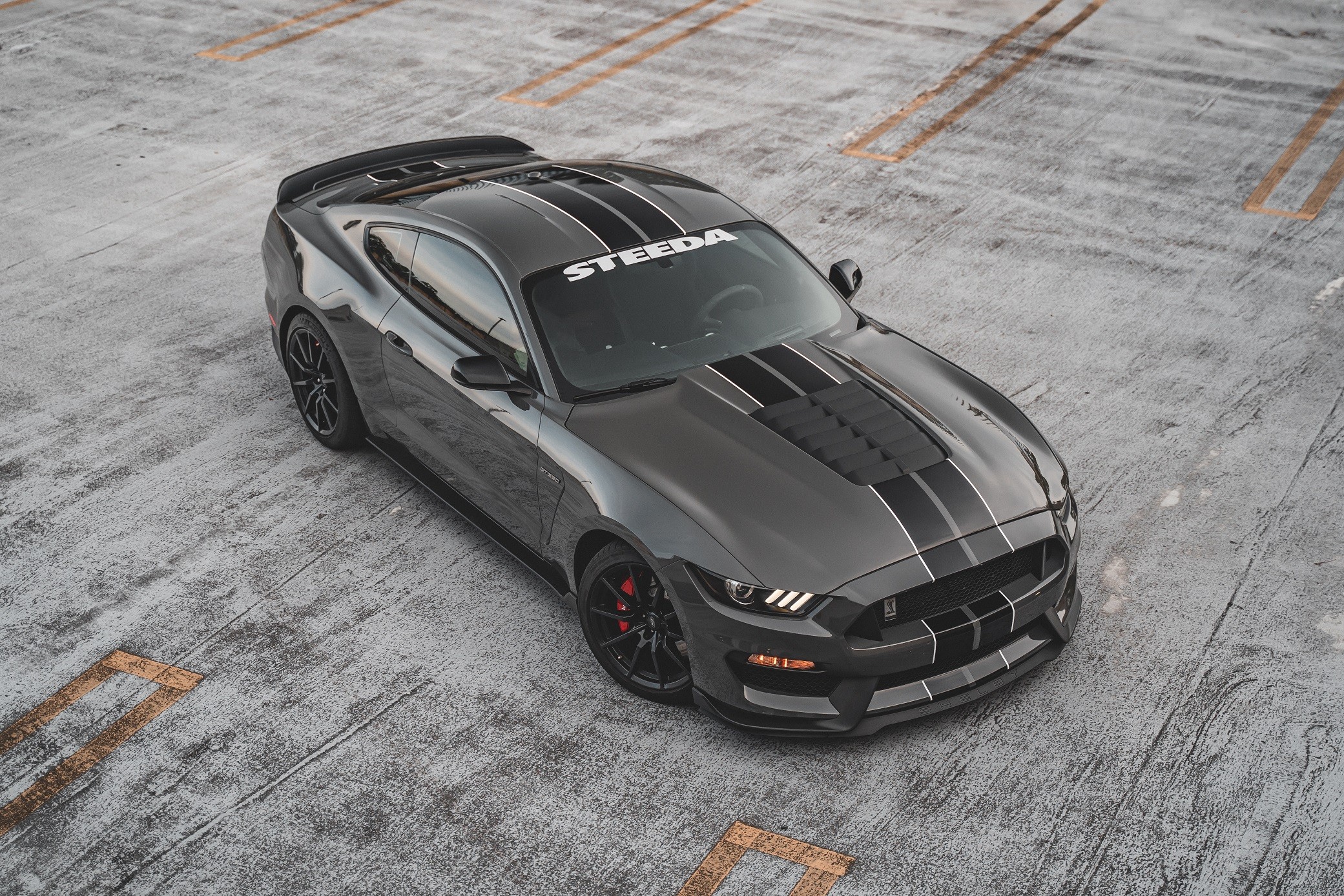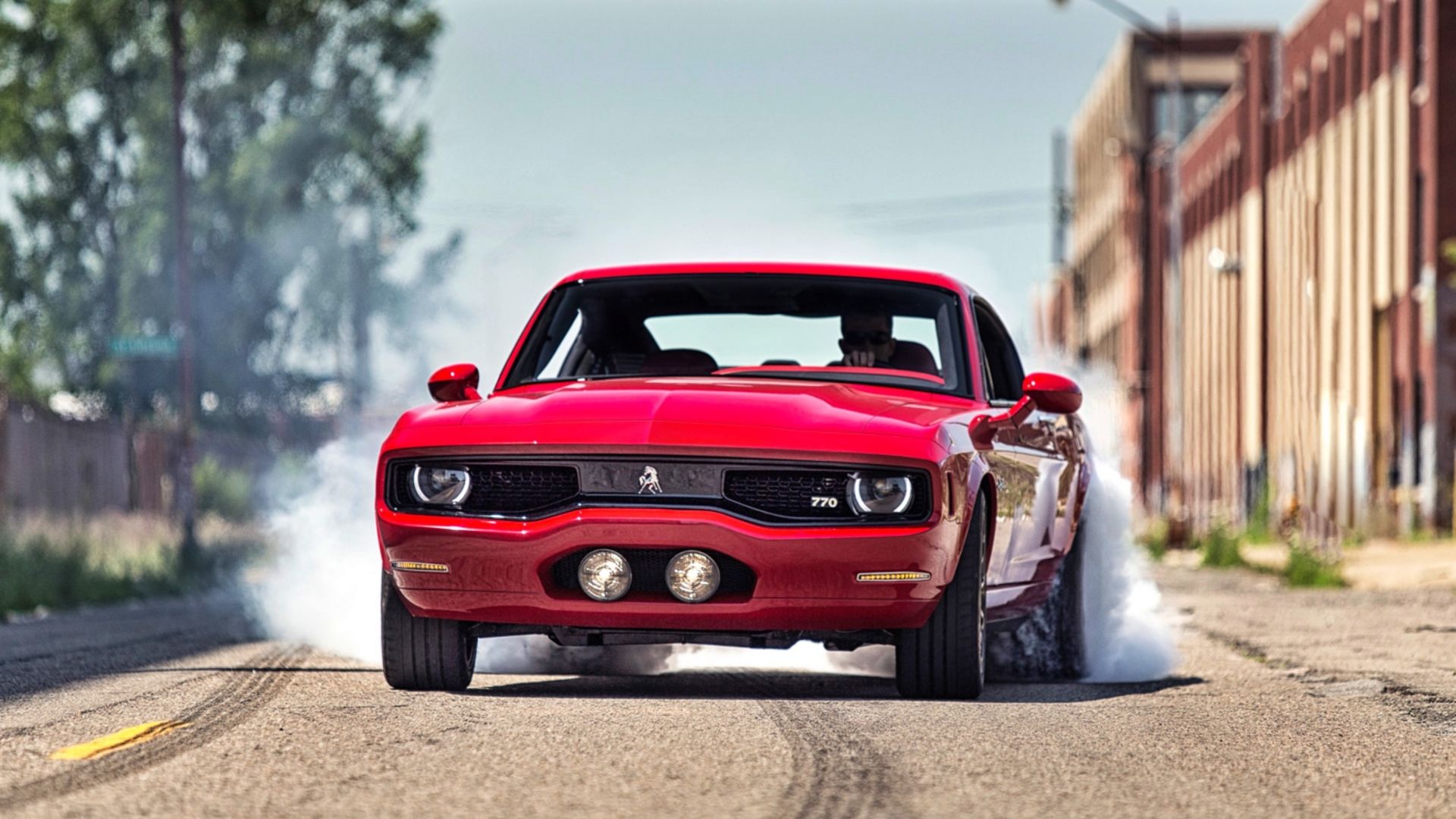Racket-buster and future New York Governor Thomas E. Dewey called him the “King of the Racketeers.” And there is no doubt Vito Genovese was one of the most vicious, conniving, and treacherous bosses in Mafia history.
Genovese was born on November 27, 1897 in the tiny town of Risigliano, located in the Province of Naples in Italy. He reached the equivalent of a fifth grade education in Italy, when in 1913 he traveled to New York City to hook up with his father, who had come to America a few years earlier. The Genovese family settled in the Greenwich Village area of Manhattan, and soon Genovese was working for an young up-and-coming gangster named Charles “Lucky” Luciano. Genovese also became tight with Mafia thugs like Frank Costello, Joe “Adonis” Doto, and Albert Anastasia. But he didn’t particularly like to associate with Jewish gangsters like Meyer Lansky and Bugsy Siegel.
The first time Costello introduced Genovese to Lansky and Siegel as their partners in various criminal enterprises, Genovese said, “What are you tying to do. Load us up with a bunch of Hebes?”
Costello snapped back, “Take it easy, Don Vitone? You’re nothing but a foreigner yourself.”
Because of the inclusion of criminal mastermind Lansky and the muscle provided by Siegel, the Prohibition era of the Roaring Twenties was very profitable for the Italians mobsters. They also hooked up with Irish mobsters Owney “The Killer” Madden and his partner Big Bill Dwyer, who was known as the “King of the Rum Runners,” and was the biggest distributor of illegal booze in the entire United Sates of America.
During the mid 1920’s, the biggest Italian mob boss in New York City was Joe “The Boss” Masseria, a porcine-looking thug, barely five feet tall, who was said to have the table manners of a “drooling mastiff.” Masseria took Luciano, Costello, and Genovese under his wings, and he inserted Luciano as his second in charge, or “Underboss.” The problem was, Masseria didn’t like his men associating with anyone who wasn’t a Sicilian, specifically mentioning Lansky, Siegel, Madden, and Dwyer. Masseria was not too fond either of Genovese, who was from Naples, and Costello (real name Castiglia), who from Calabria. However, Masseria tolerated both men because, after all, they were Italians. But Masseria would not elevate Genovese and Costello to anything above being a mere Mafia soldier. And this did not set too well with Luciano and his pals, Italian or otherwise.
In 1927, Benito Mussolini basically chased the Mafia out of Sicily; jailing some and killing others. Salvatore Maranzano, from the area around the Bay of Castellammare in Sicily, escaped to the United States with another group of Mafia exiles. Maranzano’s boss Don Vito Cascio Ferro had been imprisoned for life by Mussolini and his Chief of Police Caesar Mori. So Maranzano, figuring the American Mafia was inferior to the Sicilian brand, decided he would be able to take over all the rackets of Masseria and his cohorts without too many problems. Or at least, problems he couldn’t handle. This led to what historians called the “Castellamarese War.”
A mobster who met Maranzano soon after Maranzano arrived in America later said, “When we arrived it was very dark. We were brought before before Maranzano, who seemed absolutely majestic, with two pistols stuck in his waist, and about ninety boys who were also armed to the teeth surrounding him. I thought I was in the presence of Pancho Villa.”
From 1927 to 1930, the Castellamarese War raged all over New York City. Men were killed in and in front of pool rooms, Italian members-only clubs, all-night diners, bars and restaurants, and even in the streets as they emerged from their cars. The killers fired their guns from moving cars, roof tops, and darkened doorways. When the dust cleared, 50 bodies were piled up in the streets, which made Luciano consider the wiseness of his allegiance to Masseria. Lansky, who was the closest to Luciano, cautioned Luciano to “Wait the war out. Let the bosses kill each other, then we can step in and take over.”
It is not clear who’s idea it was first, but in the spring 1931, Luciano and Lansky had a secret meeting with Maranzano in Maranzano’s midtown office. At this meeting it was decided that Luciano and his cohorts would switch sides in the Castellamarese War and back Maranzano. Of course, this meant taking out Masseria, which Luciano had no compunction doing.
Luciano figured the best set-up was to entice Masseria into a situation the usually-cagey Masseria would feel totally comfortable with. And this, of course was scarfing down food in a four-star Italian restaurant.
According to Rick Cohen’s fine book on Jewish mobsters Tough Jews, on April 15, 1931, Luciano asked Masseria out to lunch in Brooklyn, far away from Masseria’s stronghold in Manhattan’s Little Italy. Luciano told Masseria, “We’ll go over to Scarpato’s in Brooklyn. Scarpato fixes sauce like in the old country, with the clams and the good olive oil.”
The mere mention of food caused drool to flow down Masseria’s lips, so he readily agreed to Luciano’s request. The two men took Masseria’s bullet-proof limousine from the lower east side of Manhattan to Brooklyn, and sat at a table in the back of Scarpato’s. In just a few short hours, Masseria consumed more food than the average man could eat in two days. When his belly was full, Masseria requested a deck of cards so that he and his best pal Luciano could play a little poker.
At around 3 p.m., Luciano excused himself and went into the men room. Seconds later, four men burst through the front door of the restaurant. They were comprised of the eclectic group of Genovese, Anastasia, Siegel, and a very capable Jewish killer named Red Levine. They reportedly fired 20 bullets at Masseria; some of them actually connecting with their intended target. Masseria rolled flat on his back, as dead as the card hand he was holding. In photos in the next day newspapers, all that was visible was Masseria’s right bloody hand, palm up, holding the ace of diamonds. From that point on, mobsters considered the ace of diamonds a curse. Some even sent the ace of diamonds to an enemy, warning him he was about to join Masseria in that hot place downstairs with no air conditioning.
With Masseria now quite dead, the four gunmen rushed to a waiting car, with the very nervous Ciro Terranova behind the wheel. Terranova was shaking so hard, he was unable to get the car into gear. Siegel angrily pushed Terranova aside, and drove the getaway car himself. A few years later, Terranova was banished from Luciano’s mob, because Luciano agreed with Siegel, Levine, and Genovese that Terranova had no guts.
When Luciano finally exited the men’s room, he found several nervous waiters, bullet holes in the walls and tables, and a dead Masseria on the floor. When the police arrived soon after, Luciano told the law that he didn’t see anything because, “I was in the bathroom, I didn’t hear anything.”
Since the waiters clammed up, and the police themselves had an extreme dislike for Masseria, no one was ever arrested for Masseria’s murder, and it is doubtful that the police ever even looked for his killer.
When Maranzano heard about Masseria’s demise, he was beside himself with glee. Maranzano immediately named himself the winner of the Castellamarese War and the new boss of the Mafia. He immediately made Luciano his right-hand man.
A few weeks after Masseria’s demise, Maranzano called a meeting of every Mafioso in New York City, reportedly to be over 500 made men. The meeting took place in a large warehouse in the Bronx, near the Harlem River. At this meeting Maranzano divided these men into five separate crime families. As the five bosses of these families, Maranzano named Lucky Luciano, Albert Anastasia, Tommy Luchese, Joe Profaci, and Joe Bonnano. Maranzano also appointed each family a second-in-command, or “Underboss,” and he named Genovese as the “Underboss” of the Luciano Family.
Of course, Maranzano also named himself the “Boss of All Bosses,” or the” Capi de Tuti Capi,” and this was not palatable to Luciano and the other Mafia leaders, who were tired of always having someone lording over them, taking a big piece of their pies.
Even though Maranzano promised that his new organization, which he dubbed “Cosa Nostra,” or “Our Thing,” would keep peace and prosperity in the forefront of their operation, Maranzano secretly felt quite differently. He immediately drew up a list of people he wanted dead, because he felt their ambition was a threat to his leadership. Luciano, Costello, and Genovese were on that list. Maranzano invited Luciano, Costello and Genovese to a meeting in Maranzano’s midtown office. At this meeting, Maranzano planned to have Vincent “Mad Dog” Cole, an especially vicious Irish killer, execute all three men. Maranzano paid Cole $25,000 in advance, with another $25,000 payable after the dirty deed was done.
However, Luciano had a mole inside Maranzano’s inner circle, allegedly Tommy Luchese, and Luchese tipped Luciano as to the set-up. On the day of their intended demise, neither Luciano, Costello, nor Genovese were anywhere near Maranzano’s office. Instead, Luciano sent four Jewish gangsters, selected by Meyer Lansky and headed by Red Levine (who was also one of the shooters in the Masseria killing) to Maranzano’s office. The four killers posing as police detectives, bullied their way past Maranzano’s bodyguards in the outer office, and busted into Maranzano’s inner office, where they shot and stabbed Maranzano to death.
The four killers then hurried out of Maranzano’s office, followed by Maranzano’s ex-bodyguards, who were now looking for new jobs. The men sprinted down the stairs and barreled right into “Mad Dog” Cole, who was carrying a machine gun in a violin case. They told Cole that Maranzano was already dead, and to beat it before the cops showed up. Cole did an about face and followed the killers out of the building, having just received a $25,000 pay day without firing a shot.
With Masseria and now Maranzano out of the way, the five Mafia families thrived. However, Genovese, along with Anastasia the most vicious killers of the bunch, began an out-of-control killing spree.
First, Genovese’s wife (name unknown) suddenly disappeared from the face of the earth. The word on the streets was that Genovese had killed his wife and made her body disappear, because he had fallen in love with a woman named Anna. The only problem was, Anna was already married to a man named Gerard Vernotico. Now this was merely a small obstacle to Genovese, who killed Vernotico on a tenement rooftop, then married Anna two weeks later, on March 30, 1932.
In 1934, things started falling apart for Genovese, when he was involved in an extortion plot gone awry. One of his co-conspirators in the plot was Ferdinand Boccia. Genovese, fearful that Boccia was the weak link and would squeal, murdered Boccia himself. This would later come back to haunt Genovese.
In 1936, special prosecutor Thomas E. Dewey set his sights on organized crime, and on Luciano and Genovese in particular. After Luciano was convicted on a trumped-up charge of prostitution, allegedly orchestrated by Dewey himself, Luciano was sentenced to 30 to 50 years in prison. Before he left to do his time, Luciano named Genovese as the boss of Luciano’s family. But in 1937, Genovese was indicted for the murder of Boccia that had happened three years earlier. Instead of being fed the same fate as his pal Luciano, Genovese escaped to Sicily, one year after Genovese had become an American naturalized citizen. With Genovese unable to supervise the Luciano family, Luciano, from prison, degreed that Frank Costello was now the head of the Luciano Family.
While Genovese was in Sicily he was a very busy man indeed. Having reportedly taking $750,000 in cash with him, Genovese put this money to work for him on the streets. Of course this was impossible to do without the friendship and cooperation of Italian dictator Benito Mussolini, who was intimately involved in Word War II, as an enemy of the United States. Genovese paid for the construction of a power plant for Mussolini in Nola, located in Southern Italy. Then Genovese contributed $250,000 for the construction of a Municipal building that Mussolini wanted built. Whenever Genovese got a little short of cash, he contacted his wife Anna in America, who was handling Genovese’s business operations while he was in his self-imposed exile. During this time, Anna Genovese made frequent trips to Italy to replenish her husband coffers.
To show his gratitude for Genovese’s largess, Mussolini awarded Genovese the Order of the Crown of Italy, a high civilian honor. And because one good turn deserves another, in 1943, Genovese arranged for the murder in New York City of Mussolini’s chief nemeses, Italian newspaper editor Carlo Tresa, who was stirring up the pot against Mussolini in his radical Italian newspaper Il Martello, which was sold in Italian communities in America. The hit was allegedly done by up-and-coming mobster Carmine Galente, who shot Tresa in the back of the head as Tresa was strolling down Fifth Avenue near 13th Street.
In 1944, Mussolini’s empire was crumbling. Genovese, seeing the handwriting on the wall, switched sides and began working for the United States Army, basically as an informer, who led the Army to a slew of black market operators, whom Genovese had been doing business with. Soon, the Army got wise to why Genovese was working with them so readily. It seemed that every time the Army shut down a black market operation that Genovese had led them too, Don Vitone took over that operation himself.
With the war over, and all of the witnesses against Genovese either dead or disappeared, Genovese made his way back into the United States. With no evidence against Genovese, the prosecutors simply dropped the Boccia murder case against him.
Genovese immediately tried to gain back control of the Luciano family, but Costello, with the help of Lansky and Anastasia, was too firmly entrenched. So Genovese bided his time. He moved with his wife to a luxurious house in Atlantic Highland in New Jersey and took the guise of a civic-minded businessman who gave heavily to numerous charities, including the Boy Scouts of America. In fact, Genovese was heavily involved in the narcotics business, raking in millions and building up his war chest to fight his way back to the top.
Genovese had a minor setback, when in 1953, Anna Genovese, claiming physical and emotional distress, sued Genovese for divorce. During their divorce trial, which was reported daily in the press, Anna Genovese said that her husband had stashed millions of dollars in European accounts, and that he grossed between $20,000-$30,000 a week from the Italian lottery games. This caused Genovese much dishonor amongst his Mafia cohorts, and delayed his planned coup d’état for control of the Mafia families.
Genovese waited until 1957 to make his attack. Since his return from Italy, it was estimated that Genovese, through drug dealing, Italian lotteries, and his activities with corrupt labor unions, had accumulated about $30 million of “play money” to invest in treachery. His three main obstacles to achieve his mission of Mafia control were Frank Costello, Albert Anastasia, and Meyer Lansky. Since Lansky was Jewish and therefore not eligible to be in the Mafia, Genovese figured if he took out Costello and Anastasia, Lansky would have no other choice but to fall in line.
Genovese tried to take the first bite of the apple, when in 1957, he sent hulking ex-boxer Vincent “The Chin” Gigante to ambush Costello in the lobby of Costello’s Park Avenue apartment building. Gigante pointed his gun and said, “This is for you, Frank!” But the bulled Gigante fired simply grazed Costello’s head. A quick rush to the hospital emergency room and Costello was back in his own bed that same night. True to the code of omerta, when Gigante was captured and brought to trial, Costello refused to identify Gigante as his attempted assassin.
Genovese’s second upwardly mobile move was more successful. On October 25, 1957, Genovese arranged for the murder of Anastasia, who was filled with lead by two men as he sat in the barber chair in the Park Sheridan Hotel. Genovese originally gave the murder contract to his ally Joe Profaci, the head of one of the Mafia five families, and Profaci allegedly subcontracted out the hit to Crazy Joe Gallo’s Red Hook Brooklyn crew. Anastasia’s murder was never solved and over the years several men have privately took credit for the hit, including Gallo.
With Genovese still angling for his Mafia takeover, Costello and Lansky, with the approval of Luciano who was now exiled in Italy, devised a scheme whereby they could put Genovese out of commission for good without killing him. They enlisted the aid of an ambitious mobster named Carlo Gambino, who was looking for a rise to the top himself. Gambino approached Genovese about a proposed mutimillion international drug deal that would net them tons of money. Even though Genovese had outlawed drug dealing in his own crew, Don Vitone didn’t figure this ban extended to him, so he greedily agreed. Then Gambino, though his crooked connections in law enforcement, arranged for Genovese to be arrested on a drug conspiracy charge. However, the Feds needed proof before they could try and convict Genovese.
The wily Gambino knew a convicted minor drug dealer rotting in Sing Sing Prison named Nelson Cantellops. He approached Cantellops though an intermediary and suggested if Cantellops would testify in court that he had witnessed Genovese involved in several big money drug deals, Gambino would arrange for Cantellops to be paid the whopping sum of $100,000, a suspended sentence, and a release from prison. To accomplish this, Costello, Lansky, and Luciano would contribute $50,000, and Gambino would kick in the other $50,000.
Luciano later said about the sting, “We had to pay him (Cantellops) pretty good.”
Cantellops thought about the proposition for about two seconds and he agreed to take the bribe.
Then an anonymous tip was called in to the New York Narcotic Bureau saying that Cantellops would be willing to trade information on Genovese for his freedom. With Genovese being such a big fish, and Cantellops hardly a minnow, the government readily agreed.
In 1958, Genovese and twenty four member of his crew were arrested for violating the new Narcotics Control Act.
In 1959, at Genovese’s trial, Cantellops was the star witness for a full four weeks. Cantellops said under oath that he had personally witnessed Genovese and his underlings over the years making numerous drug buys. He also said that for two years he had acted as a courier for Genovese, carrying heroin from New York City to various other cities around the country. Cantellops testified that on one occasion he had accompanied Genovese to a meeting in the Bronx where it was discussed how to divvy up the heroin-selling territories.
Based almost exclusively on the testimony of Nelson Cantellops, Genovese and all 24 of his cohorts were found guilty. Genovese was sentenced to 15 years in prison, to be served at the Atlanta Federal Penitentiary in Atlanta, Georgia.
While in prison, Genovese continued to run his crime family though intermediaries. Mobster Joe Valachi later testified before the John L. McClellan’s Subcommittee that while in jail Genovese, because he knew he had been framed, became extremely paranoid. Genovese trusted no one, and even ordered the execution of his top aide Tony Bender, just because he suspected Bender, wrongfully of course, in being involved in the set-up.
In prison, Genovese developed nervous symptoms and severe heart problems. Vito Genovese died of a heart attack on February 14, 1969, while still in prison. He is buried in Saint John’s Cemetery in Queens.
In the 1972 movie The Valachi Papers, staring Charles Bronson, Genovese was portrayed by actor Lino Ventura. And in the 2001 TV movie Boss of Bosses, Genovese’s part was played by actor Steven Bauer.






More Stories
Muscle Car Collecting Tips for the Ultimate Car Hoard
Rare Muscle Cars Unveiling Hidden Automotive Treasures
Muscle Car Upgrades Transform Your Ride for the Better